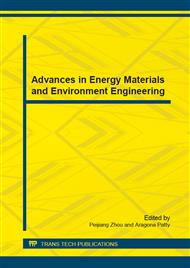p.368
p.374
p.386
p.390
p.394
p.400
p.407
p.413
p.417
The Vegetation Remote Sensing Phenology of Qinling Mountains Based on the NDVI and the Response of Temperature to it
Abstract:
The acquisition vegetation phenology information by using time series of satellite data is an important aspect of the application of remote sensing and climate change research . Based on the MODOS NDVI time series of images in 2000-2010, Dynamic threshold method and GIS tools were used to extract the vegetation phenology parameters of Qinling Mountains in 2000-2010 , the accuracy of remote sensing phenology results was verified combined with the measured phenological data, And analyzed the characteristis of phenological variation and the relationship between temperature changes and the phenology of Qinling region,and quantified the extent of temperature change on vegetation phenology in a macro scale. Calculated :the trend of vegetation phenology variation based on the NDVI and the results of phenological data are consistent. Results show that NDVI has good revealed effect on vegetation phenology; From 2000 to 2010,it ahead of 1.8 days at the beginning period of vegetation phenology and late back 1.2 days at the end period ; The start phenology NDVI was generally greater than the late phenology on spatial distribution; The effective temperatures and the temperature in spring, growing period had a maximum influence on NDVI at beginning phenology period,the temperatures in summer and autumn had greater impact on the final NDVI .
Info:
Periodical:
Pages:
394-399
Citation:
Online since:
December 2014
Authors:
Price:
Сopyright:
© 2015 Trans Tech Publications Ltd. All Rights Reserved
Share:
Citation:


